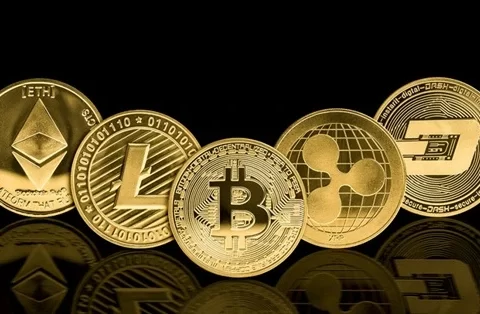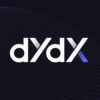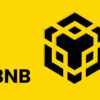
Solana (SOL) has quickly emerged as one of the leading blockchain platforms in the cryptocurrency space, known for its high performance, scalability, and low transaction costs. Since its inception, Solana has attracted developers, decentralized applications (dApps), and investors due to its unique architecture and growing ecosystem. In this article, we will provide an overview of Solana’s key features and explore the benefits that set it apart from other blockchain platforms.
1. What Is Solana?
Solana is a high-performance blockchain platform designed to support decentralized applications (dApps) and cryptocurrencies. Launched in 2020 by Solana Labs, it was built with a focus on speed, scalability, and low costs—three key areas that have posed challenges for earlier blockchain networks like Bitcoin and Ethereum.
The platform’s native cryptocurrency is called SOL, and it is used for transaction fees, staking, and governance. Solana has gained widespread adoption due to its ability to process transactions rapidly while keeping fees low, making it an attractive platform for both developers and users.
2. Key Features of Solana
Solana’s success can be attributed to its innovative technological features, which enable it to outperform many other blockchain platforms in terms of speed and scalability. Below are some of the most notable features that drive Solana’s performance.
Proof of History (PoH)
One of Solana’s core innovations is Proof of History (PoH), a unique consensus algorithm that enhances the platform’s speed and efficiency. PoH works by providing a cryptographic timestamp for each transaction, allowing validators to agree on the order of events without needing to communicate with one another constantly.
This reduces the time it takes to confirm transactions and contributes to Solana’s ability to process a high volume of transactions per second (TPS).
Tower BFT Consensus
To secure the network, Solana uses a modified version of the Byzantine Fault Tolerance (BFT) consensus mechanism, called Tower BFT. Tower BFT works in tandem with Proof of History to ensure that transactions are processed and validated efficiently and securely.
This combination of PoH and Tower BFT allows Solana to achieve fast finality, meaning that transactions are confirmed and added to the blockchain almost instantly.
Sealevel: Parallel Smart Contracts
Solana supports smart contracts, similar to Ethereum, but with one crucial difference: its ability to process parallel transactions. Solana’s Sealevel runtime allows the network to execute thousands of smart contracts simultaneously, rather than sequentially.
This parallel processing capability significantly improves throughput, making Solana an ideal platform for decentralized finance (DeFi) applications, decentralized exchanges (DEXs), and other high-demand use cases.
Gulf Stream: Mempool-less Transaction Forwarding
Solana employs Gulf Stream, a technology that optimizes transaction forwarding. Unlike traditional blockchains, which rely on a mempool to store unconfirmed transactions, Gulf Stream allows validators to forward transactions directly to the next set of validators before they are fully confirmed.
This reduces network congestion, speeds up transaction confirmation, and contributes to Solana’s high TPS capabilities.
Turbine: Block Propagation Protocol
To further enhance scalability, Solana uses Turbine, a block propagation protocol that breaks down data into smaller chunks and distributes it efficiently across the network. Turbine helps ensure that the network remains fast and responsive, even as it scales to accommodate more users and transactions.
3. Benefits of Solana
Solana’s unique technological innovations provide a range of benefits that make it an attractive option for developers, businesses, and cryptocurrency users. Below are some of the key benefits Solana offers:
1. High Throughput
One of Solana’s biggest advantages is its ability to process a high number of transactions per second. Solana can handle 65,000 TPS, which is significantly higher than many competing blockchains like Ethereum, which can only process around 15-30 TPS.
This high throughput makes Solana well-suited for applications that require rapid transaction processing, such as decentralized finance (DeFi) platforms, gaming applications, and NFTs.
2. Low Transaction Costs
Despite its high performance, Solana boasts some of the lowest transaction fees in the blockchain space. On average, transaction fees on Solana are less than $0.01 per transaction, making it an affordable option for developers and users alike.
These low fees are especially beneficial for DeFi applications and NFT platforms, where frequent transactions are common, and high fees can quickly add up.
3. Fast Confirmation Times
Solana’s Proof of History and Tower BFT consensus mechanisms allow it to achieve sub-second finality, meaning transactions are confirmed almost instantly. This is a significant improvement over other blockchains like Bitcoin or Ethereum, where confirmation times can range from several minutes to hours.
The ability to confirm transactions quickly is critical for real-time applications like payment systems, decentralized exchanges, and high-frequency trading platforms.
4. Developer-Friendly Ecosystem
Solana has built a robust developer ecosystem, offering a range of tools and resources to support the creation of dApps. The Solana ecosystem includes a growing list of SDKs, developer libraries, and a strong community that helps developers build and deploy applications quickly.
Additionally, Solana’s support for the Rust programming language makes it easier for developers to write and deploy smart contracts, contributing to the rapid growth of dApps on the platform.
5. Scalability Without Compromising Decentralization
Many blockchains struggle to balance scalability with decentralization. Solana achieves both by employing innovative technologies that allow the network to scale while maintaining its decentralized nature. As a result, Solana can support a large number of nodes and users without sacrificing security or decentralization.
4. Growing Ecosystem and Use Cases
Since its launch, Solana has built an impressive ecosystem of dApps, DeFi protocols, and NFT platforms. Some of the most popular projects on Solana include:
- Serum: A decentralized exchange (DEX) built on Solana that offers lightning-fast transaction speeds and low fees.
- Raydium: An automated market maker (AMM) that provides liquidity to the Solana ecosystem.
- Star Atlas: A blockchain-based gaming metaverse that utilizes Solana’s scalability to offer immersive, real-time gaming experiences.
Solana’s growing list of partnerships and projects highlights its versatility and the wide range of applications it can support.
5. Why Solana Is Gaining Popularity
The combination of high throughput, low fees, and fast finality makes Solana an attractive platform for developers, businesses, and users. Its ability to handle high transaction volumes and provide a seamless experience at minimal costs has led to widespread adoption in industries ranging from finance to gaming and NFTs.
Solana’s robust infrastructure and developer-friendly ecosystem make it a preferred choice for launching decentralized applications that require speed and scalability.
Conclusion
Solana (SOL) has rapidly become a key player in the cryptocurrency and blockchain space, offering a high-performance platform that addresses the key challenges of scalability, speed, and cost. With its innovative features like Proof of History, Tower BFT, and Sealevel, Solana is well-positioned to support a wide range of applications, from DeFi and NFTs to gaming and decentralized exchanges.
As Solana continues to grow and expand its ecosystem, it will remain an attractive option for developers and users looking for a fast, scalable, and cost-effective blockchain solution.











